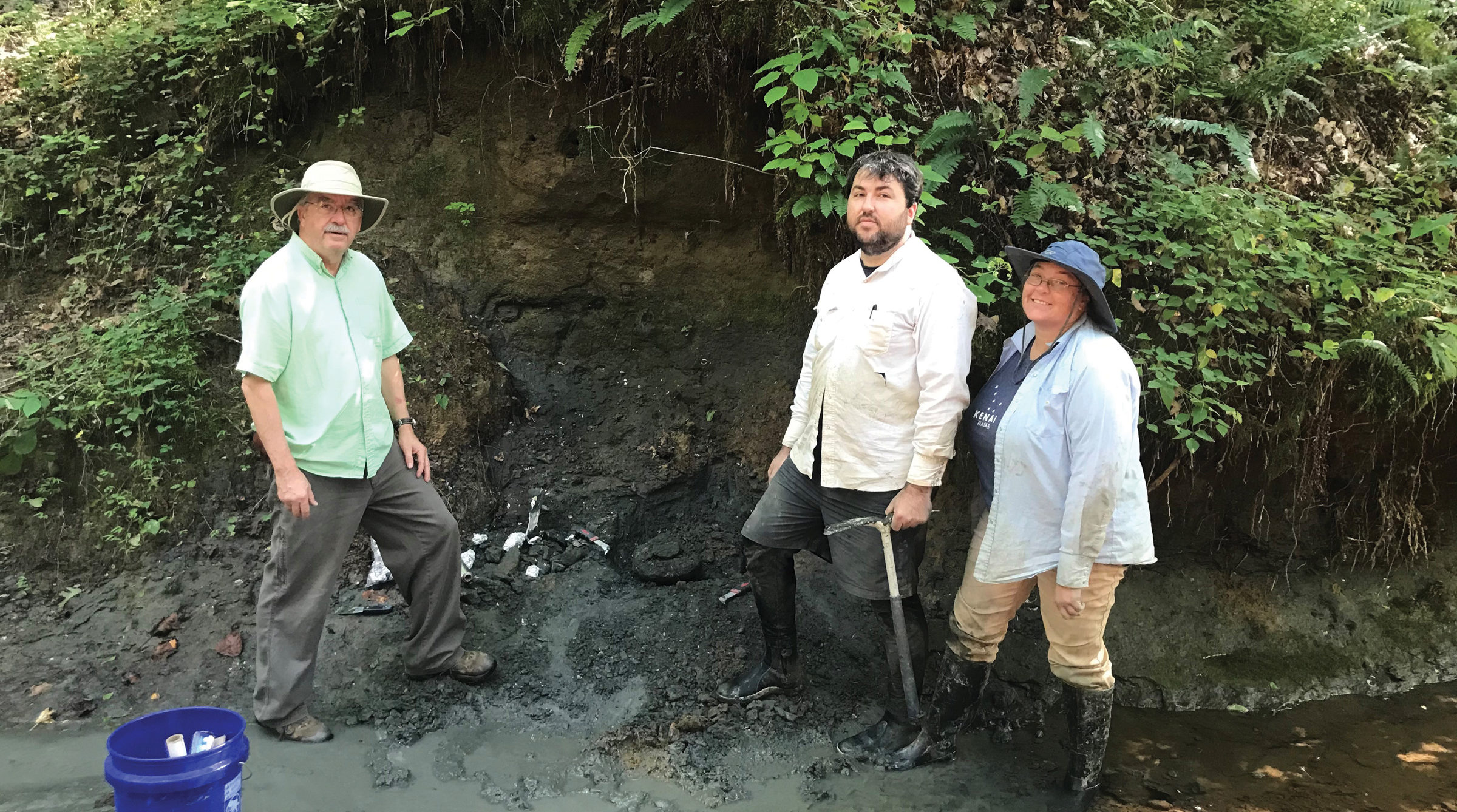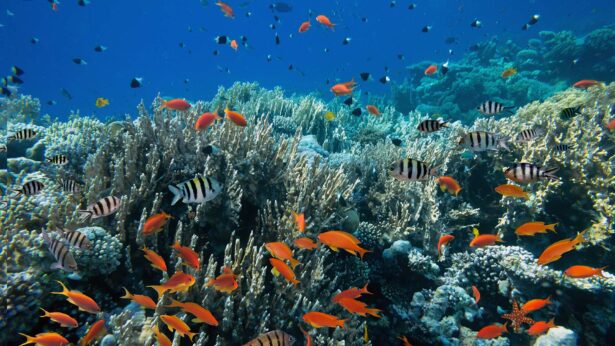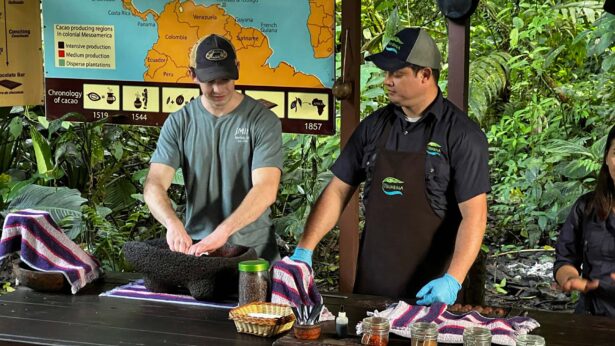Featured photo: Left, Michael Gibson, UT Martin professor of geology and Coon Creek Science Center program coordinator, and colleagues work to uncover the Cretaceous Period past at Coon Creek Science Center.
Photo courtesy of Michael Gibson
By Erin Chesnut | Photos by Steven Mantilla
Travelers along U.S. 22 through McNairy County often have little idea how close they are to one of the largest deposits of preserved fossils in the country. Just a few miles away, off a quiet country road, lies the Coon Creek Science Center—a site recognized by geologists and paleontologists worldwide as a mother lode of information from the Cretaceous Period, otherwise known as “dinosaur time.”
And now, the center is run by UT Martin.
“The geologic history of that site, it preserves things way better than most other places. It was never buried too deep, so you didn’t squash (the fossilized material) and break it and crush it. The organisms are there. There was never so much water and hot fluids that moved through the sediment and changed their chemistry. We find perfectly preserved fossils; we find the same chemistry (they had) when they were alive. There’s no alteration. It’s perfect—like time-jumping to the past,” Michael Gibson, UT Martin professor of geology and Coon Creek Science Center program coordinator, says. “That gives the site an elevated level. There’s only about 10 (sites of this caliber) in the U.S.—maybe.”
In fact, Gibson says, the UT Martin Coon Creek Science Center is also the global type-reference section for the type of seafloor where these fossils are found. The Cretaceous Period boasts the highest known sea level in Earth’s history, which divided the North American continent in two.
“This (repository) is the standard for the unit and the organisms themselves, so everybody that is going to do any work on that narrow time frame has to refer back to the Coon Creek fossil site,” he explains.

While the center’s connection to UT Martin might not be as old as the fossils found along its banks, it was still decades in the making. Originally privately owned, the Memphis Museum of Science and History (formerly the Pink Palace Museum) purchased the site in the mid-1980s and opened it as a science center shortly thereafter. Museum officials recruited Gibson to act as an associate curator—an honorary title he stills holds with the museum—to evaluate discovered items and requests from outside researchers to access the area.
Over time, demand for public access outpaced the museum’s ability to staff and maintain the site. Leaders agreed that something needed to be done to protect the integrity of such an important geologic location. Thanks to Gibson and others, UT Martin was in the perfect position to step in.
“In a big-picture sense, we had let the site falter from what it originally was from an engagement standpoint, and we just weren’t really in a place where we could support it,” Kevin Thompson, executive director of the Memphis Museum of Science and History, says. “We knew the asset needed to be protected and cared for. It’s one of the top fossil sites in the country, and you’ve got to be a good steward of that.”
Before the final decision was made, letters poured into UT Martin Chancellor Keith Carver’s office from across the country showing support for the UT Martin administration of the Coon Creek Science Center. Writers include state geologists from across the country, faculty members from top universities, administrators from national museums and presidents of groups such as the Paleontological Society and the Society of Vertebrate Paleontology.
“In preserving and maintaining the site for future generations, it makes very good sense for UTM and its geoscience program to take the lead, given its longstanding expertise with Coon Creek and its ability to administer a field station that serves the needs of UTM’s students and the broader community that reaches far beyond Tennessee,” wrote Arnold Miller, president of the Paleontological Society.
Thompson and his fellow board members agreed. In April, UT Martin announced the acquisition.
“The partnership with UT Martin really let us reactivate the site the way that it should be activated and get people in here who know what they’re doing and can really turn it around,” he says.
While the museum still owns the acreage and maintains first claim to any major finds made at the site, UT Martin is in full control of all programming and infrastructure maintenance on-location.
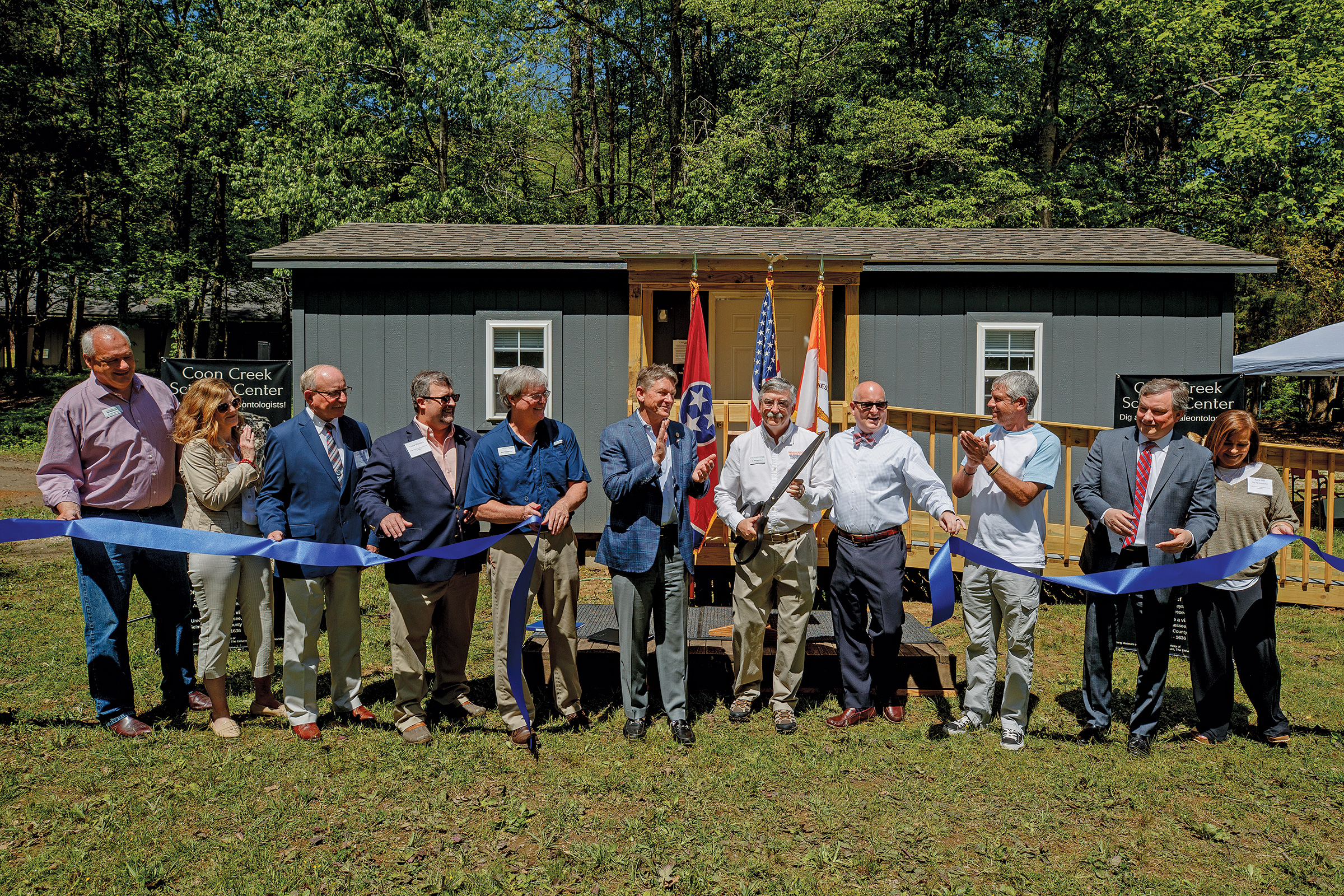
Thanks to UT Martin programming, the Coon Creek Science Center now boasts hands-on programs in geology, paleontology, astronomy, forestry, ecology and other subjects for all demographics. From K-12 schoolchildren and college volunteers and interns to local amateurs and professional researchers, everyone is invited to explore the Coon Creek repository and learn about the way the Earth formed and the organisms that live in it—both now and in the past.
“We’ve built some temporary buildings, (including) an entire paleontology lab that’s fully outfitted with the equipment and the microscopes and everything,” Gibson says. “We’ve started a program where we use school groups to help with the infrastructure—so, for example, our engineering department (at UT Martin). If you’ve got to get across a creek, they are the ones designing foot bridges and road bridges, and they install them, so that everything you see on that site is really driven by student learning and student projects. It’s referred to as ‘citizen science’ where you bring people in, you teach them what to do and then you use them to help you do the science. That’s what we’re doing now.”
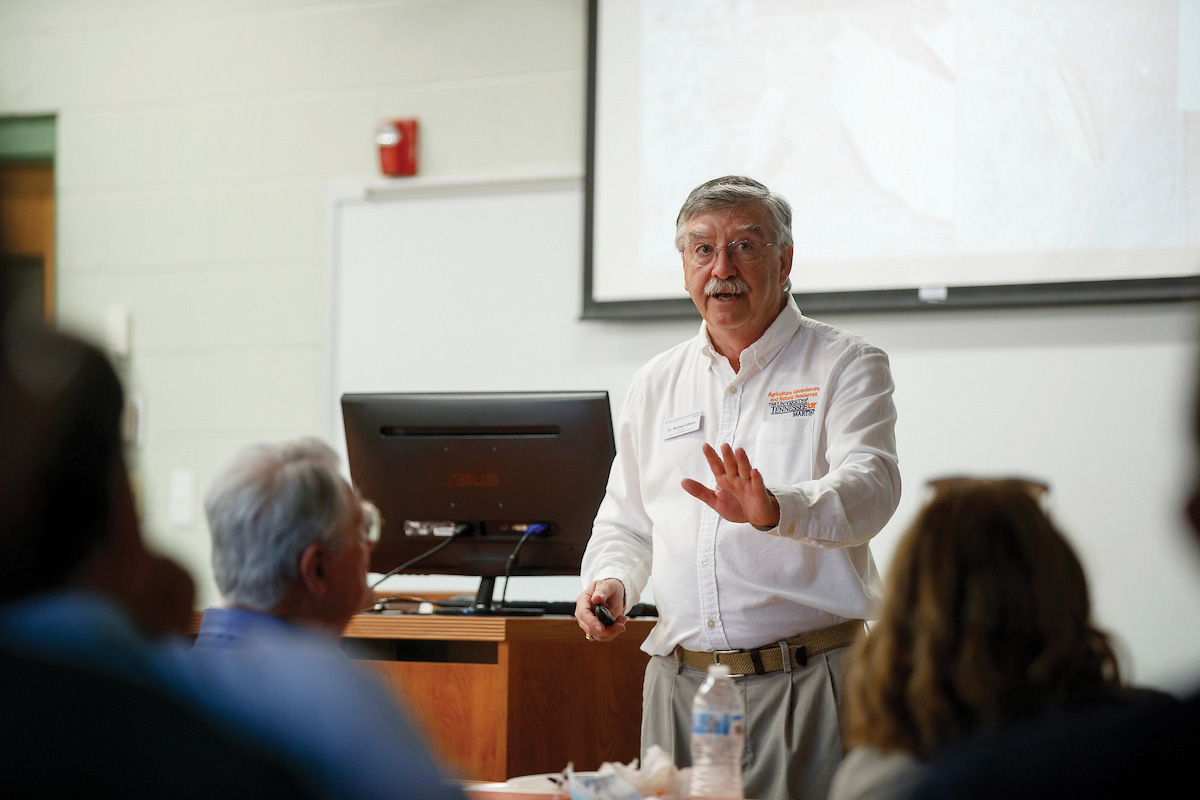
In fact, the most popular program at Coon Creek costs $20 per person. The 4-hour program allows visitors to dig in the fossil deposit while learning about the area and the excavation process.
“They get their own fossil material, and they get instruction to prepare it so they can actually take it home, and nothing bad will happen to it,” he says. “Our students, our (geosciences) majors, our interns are interacting one-on-one with all our visitors. So they not only learn the geology of the site, but they also learn to become educators to the public.”
The site is officially run from the nearby UT Martin McNairy County Center/Selmer, one of UT Martin’s five extended regional locations. Center Director Alan Youngerman, a geologist by training, says he is excited to see Coon Creek open its doors again under a university administration. He also is proud of its impact on tourism development in McNairy County.
“The local population, as well as surrounding states, now have improved access to the property through our community days. The collaboration with UT Martin provides additional opportunities through research and the publishing of scientific papers associated with a world-famous fossil site to reinforce the ‘Everywhere, UT’ concept,” he says.
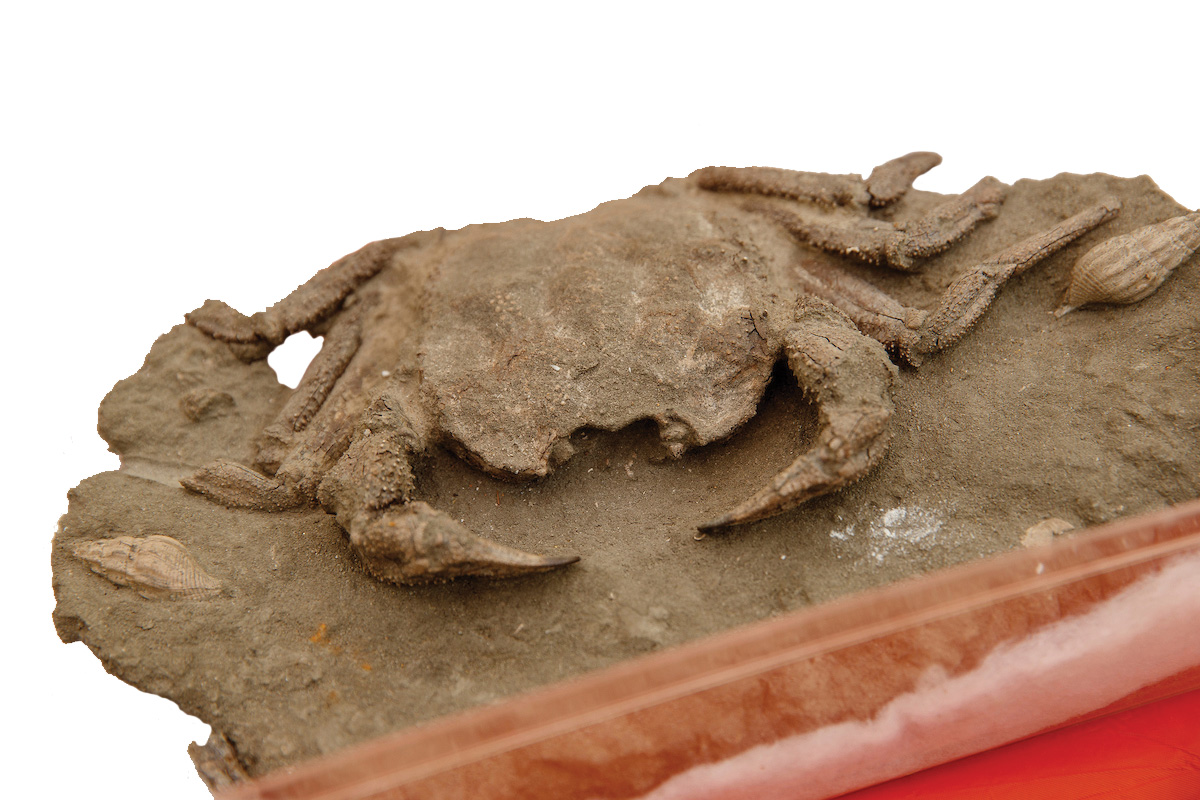
Jessica Huff, director of chamber and tourism with the McNairy County Economic Development Commission and chamber of commerce, says she has seen an increase in the number of local school groups taking students to the Coon Creek Science Center to bring another layer of learning to their classroom experiences.
But it’s not only K-12 students who are positively impacted by university programming at Coon Creek.
Gibson has hired paid interns from UT Martin, the University of Memphis, Tennessee State University, UT Chattanooga and others who provide public programming. Jack Garrett, a UT Martin senior from Union City, serves as lead intern and docent at the center and says his experiences there will serve as a solid foundation for the work he plans to do in paleontology.
“My work at (the) Coon Creek Science Center is some of the most gratifying work I’ve ever done. I lead tours alongside the site directors. I also prepare and collect fossil specimens for educational and research purposes for scientists and teachers alike,” he says. “Working for Dr. Gibson is arguably the best decision I’ve made regarding my geology/paleontology education. There, I’ve gained months’ worth of hands-on field experience that is vital to becoming a decent geologist. I’ve also been exposed to a wide array of fossil taxa and unusual ancient biotic interactions, which increase my ability to recognize various characteristics that lead to important inductions about the environment that similar fossils lived in.”
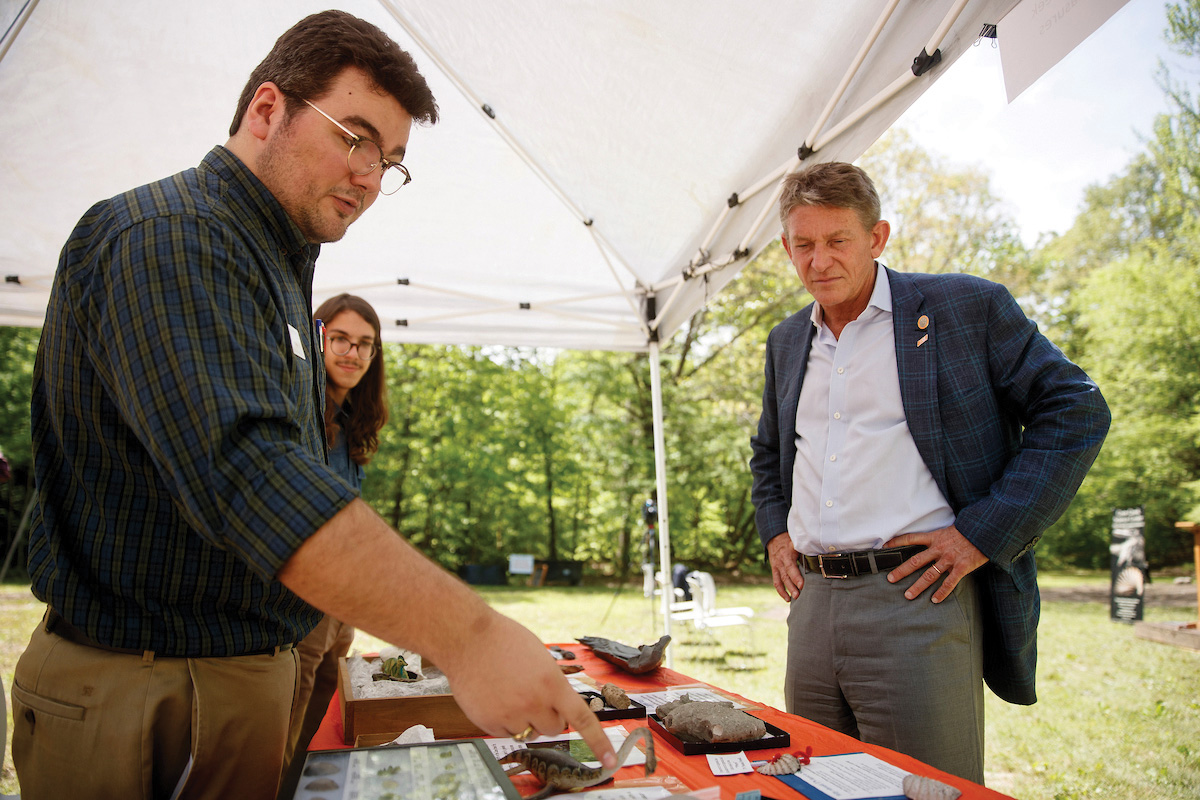
Sharon Briggs, a 2021 UT Martin alumna and current graduate student at the University of Memphis, also is a student intern, thanks to Gibson’s expanded student program.
“In addition to the day-to-day tasks of the site, I work with fossil material—cleaning and preserving the fossils found on location. The majority of my work there, however, is educational. We host groups who come in and learn about the site and the fossil material found there. Education and conservation (are) by far our most important work at the creek. We also assist visiting scientists who are working on various projects,” she says.
Briggs says she has learned more at the center than just geology, however, and adds public speaking, diplomacy, networking and problem-solving to the list. In fact, she made the decision to attend the University of Memphis after meeting graduate-level faculty conducting research at
Coon Creek.
As time ticks forward, professional researchers and the merely curious alike will be able to mine Coon Creek fossil site for clues to the past and gain a deeper understanding of the world—thanks to UT Martin’s stewardship of what UT System President Randy Boyd has called “the oldest UT campus.”
